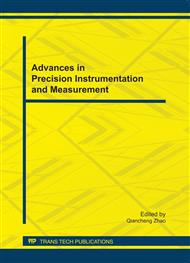p.177
p.181
p.187
p.194
p.199
p.205
p.209
p.214
p.219
The Numerical Simulation and Experiment Research for Measurement of Error Vector Magnitude (EVM)
Abstract:
Wireless communications is one of the main industrial areas that require metrological support. However, Error Vector Magnitude (EVM), which is one of most important parameters used to define the performance of wireless communications equipment qualitatively, is facing some difficulties in making traceable measurement. In order to research the effect of all factors on the measurement of EVM, accurately characterize the EVM of a number of different signal generators thereby breaking the link between generator and receiver EVM, and aim at establishing a low uncertainty, traceable EVM measurement capability, we need to built many kinds of analysis platform, and let their results compare with each other for verifying their correctness and accuracy. In this paper, we presented theory method, numerical simulation, and experiment platform to calculate or measure EVM and comparing the results with each other. Using these analysis platforms, we mainly analyzed the effect of IQ impairments of modulator on the EVM.
Info:
Periodical:
Pages:
199-204
Citation:
Online since:
September 2011
Price:
Сopyright:
© 2012 Trans Tech Publications Ltd. All Rights Reserved
Share:
Citation:


